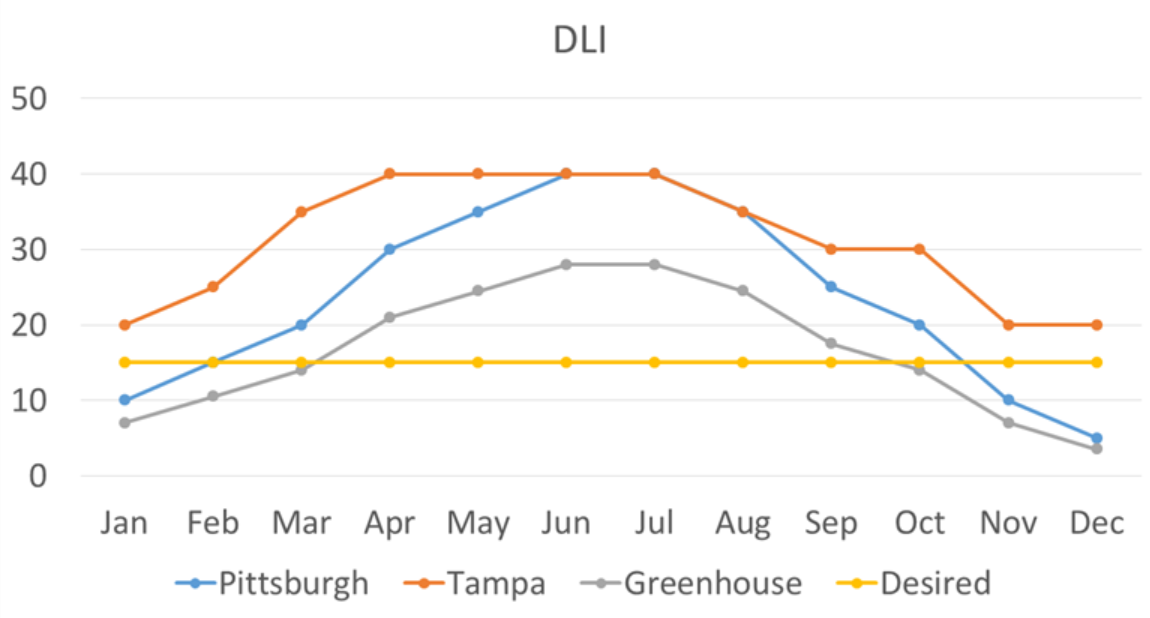It’s getting to be late October in Pittsburgh, which means waking up to temperatures in the 30s, highs in the 40s, and very gray skies. My very unscientific phone light meter reads <5k lux, which means my plants are starting to feel a bit starved. The DLI or Daily Light Integral is a measure of total radiant energy received over the course of day. Being a nerd, the first thing I do with this info is to graph it. According to Purdue, good quality light for tomatoes bottoms out around 14-15 DLI (pdf link), which I’ve represented with the desired DLI line. Using their DLI map of the US (which is pretty rough, so treat as only approximate), I’ve plotted light for two cities: Pittsburgh (where I live) and Tampa (closest city to where my family lives in FL). If you compare, ouch! Pittsburgh is da pitts when it comes to having light in the winter. And my greenhouse glazing only lets in 72% of the light, so the available light inside my greenhouse is even less.

So I need grow lights to supplement the natural light (or lack there of!). According to this, I probably should have started the grow lights up just at the beginning of Oct, but I’m just today getting around to it. Today I installed three lights:
- 400W metal halide high intensity discharge light with a basic reflector
- 120 W actual Mars Hydro 300 (purple variety)
- 120 W actual Roleadro 300W (white/yellow)
I’ll probably talk more about these lights in a later post, but one interesting thing worth noting: I changed out my MH 400 W bulb and tested the difference in output. The old bulb had been used the past year so I replaced it. For kicks, I measured the before and after by resting my unscientific phone’s light meter app in a set place. I measured twice before changing and twice after to make sure subtle differences in phone placement weren’t affecting readings too much (they weren’t). Interestingly enough the first measurement was ~7k lux and the second was ~9k lux so there was actually pretty significant difference between the two bulbs!
~9k lux still isn’t great but that’s at the soil level (I wanted my phone to be on a static resting place instead of being hand-held to increase repeatibility between measurements) and there still is some light coming from the sun. In any case, I’ll be turning these grow lights on when it’s cloudy out to help give my plants the tasty tasty light they love 🙂